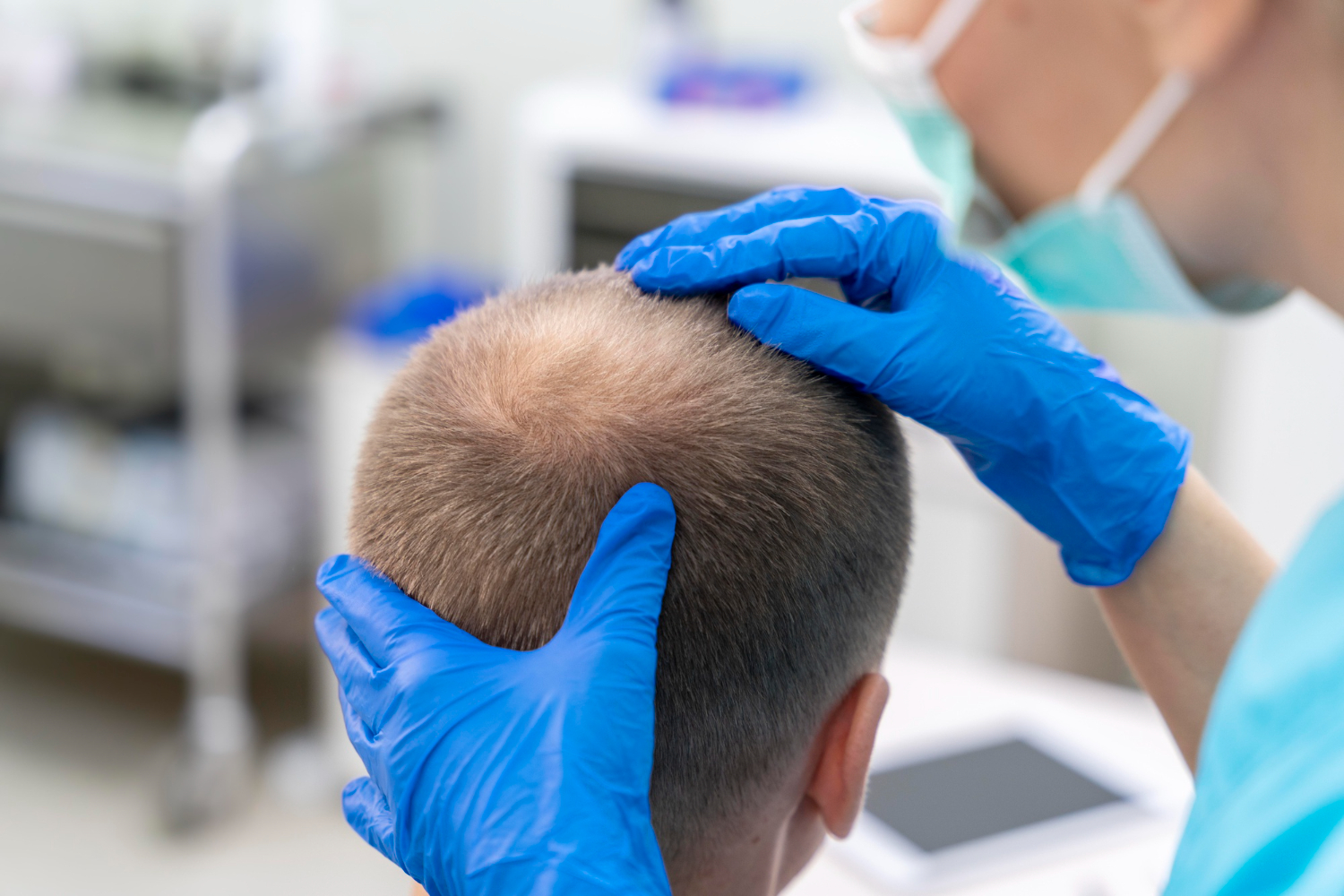
Hair loss, a condition affecting millions globally, can be distressing and impact one’s self-worth. However, by understanding its causes, treatments, and coping mechanisms, one can effectively address this issue. This article delves into the science of hair loss and offers potential solutions.
Understanding the Science Behind Hair Loss
Hair Loss Explained:
Hair loss, or alopecia, arises from various factors. The predominant type is androgenetic alopecia, often termed male or female pattern baldness. This form results from a mix of genetic and hormonal influences, causing hair follicles to miniaturize, leading to hair thinning and eventual loss.
Other Hair Loss Triggers Include:
1. Medical Conditions:
- Thyroid disorders
- Autoimmune diseases (e.g., alopecia areata)
- Scalp infections (like ringworm)
- Nutritional deficiencies
2. Hormonal Changes:
Events like pregnancy, childbirth, menopause, or conditions such as polycystic ovary syndrome (PCOS) can lead to hair loss.
3. Medications and Treatments:
Drugs for cancer, arthritis, depression, and hypertension might induce hair loss. Treatments like chemotherapy and radiation can also cause temporary or permanent hair loss.
4. Stress and Lifestyle:
Factors such as emotional stress, poor nutrition, sudden weight loss, and excessive hairstyling can exacerbate hair loss.
Effective Hair Loss Treatments
While some hair loss causes, like genetics, might be irreversible, various treatments can mitigate the issue. Here are some popular methods:
-
Medications:
Minoxidil and finasteride are FDA-approved drugs for pattern baldness. While minoxidil promotes hair growth, finasteride prevents testosterone conversion to dihydrotestosterone (DHT), a hormone causing hair follicle shrinkage.
A surgical method that transplants healthy hair follicles to balding regions, offering a lasting solution for eligible individuals.
-
PRP Treatment:
PRP (Platelet-Rich Plasma) treatment involves drawing a patient’s blood, processing it to concentrate the platelets, and then injecting it into the scalp. This method is believed to promote hair growth by enhancing the health of hair follicles. It’s a non-invasive method suitable for both home and professional use.
-
Scalp Micropigmentation:
This method tattoos minuscule pigments onto the scalp, simulating a fuller hair appearance, ideal for those with significant hair loss or those favouring a buzz-cut look.
Coping Mechanisms and Lifestyle Adaptations
Hair loss can profoundly affect one’s self-perception and confidence. Here are some coping strategies:
1. Support Networks:
Engage with friends, family, or support groups to share experiences and gain encouragement.
2. Hairstyling and Camouflage:
Experiment with varied hairstyles or hairpieces to mask thinning regions and boost your look.
3. Self-Care and Stress Management:
Incorporate stress-relieving techniques like meditation or yoga. Maintain a nutritious diet rich in essential vitamins and proteins.
4. Embracing Change:
Accepting your evolving appearance can be liberating. Prioritize overall well-being and foster self-confidence, irrespective of hair conditions.
Conclusion
Hair loss is a complex issue with diverse causes and treatments. By understanding its root causes and exploring available treatments, individuals can make informed decisions. While no universal solution exists, adopting coping strategies and embracing personal change can help one navigate hair loss challenges, fostering self-assurance and a positive self-image.
For professional advice, consult dermatologists or hair specialists. A reliable platform like tophairlossclinic.com can guide you to the best hair loss clinics tailored to your needs, connecting you with seasoned professionals adept at handling various hair loss types.
If hair loss is a concern for you, consider reaching out to TopHairLossClinic for the best hair transplant solutions. Their team is ready to assist. For more on hair loss, visit their informative page.

